Cell Phones for Seniors: A Buyer’s Guide
We have the scoop on the best senior cell phones and cell phone plans.
We have the scoop on the best senior cell phones and cell phone plans.
SeniorLiving.org is supported by commissions from providers listed on our site. Read our Editorial Guidelines
In the market for a new cell phone? Whether you're brand new to the world of cell phones or a smartphone wiz, you're in the right place. In this guide, we'll cover everything you need to know before purchasing a new cell phone, including how to choose the right device for your needs, the best cell phone providers for seniors, and more!
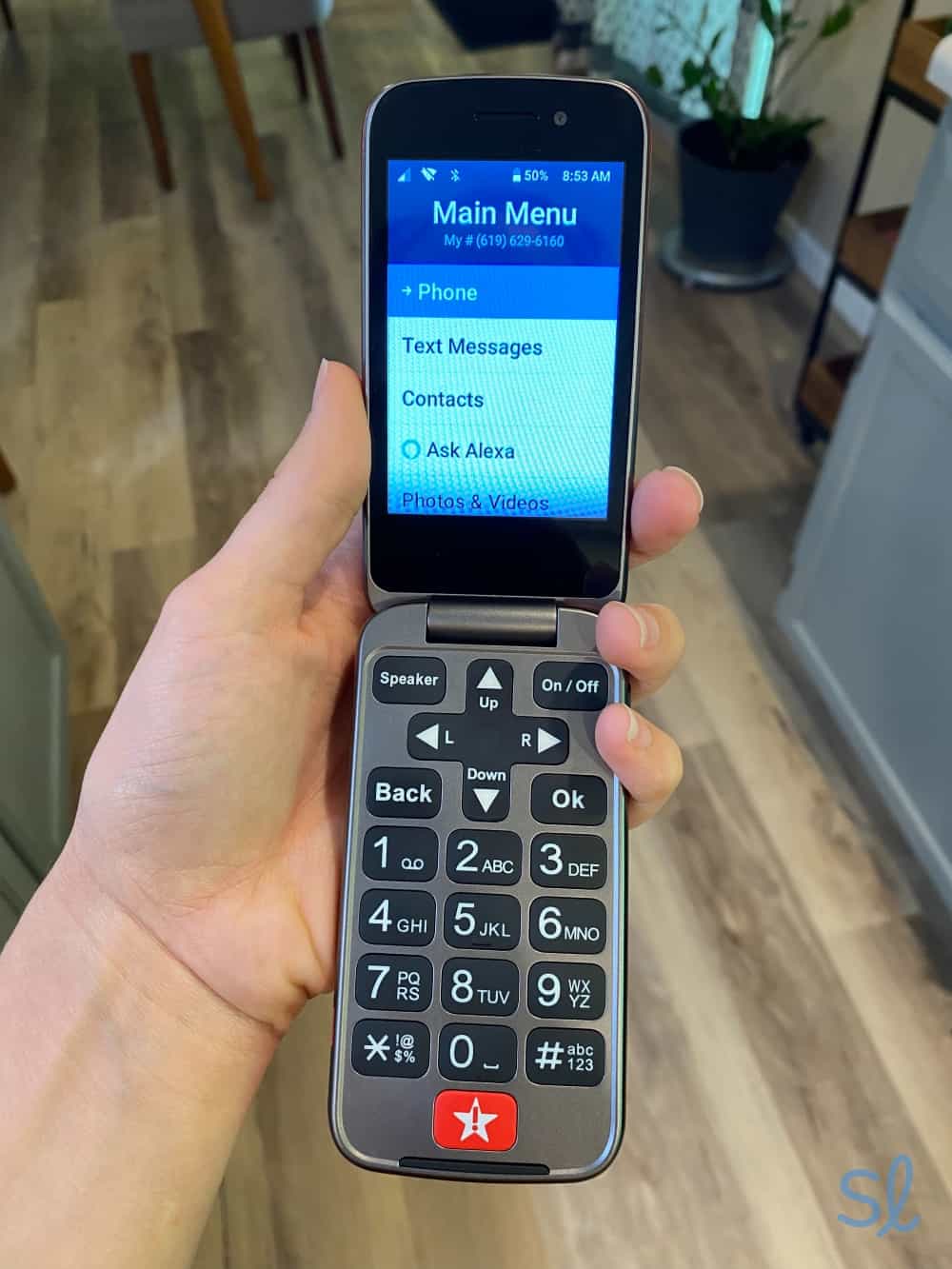
Whether you’re looking for an affordable cell phone, a smartphone with all the bells and whistles, or a simple flip phone, we’ve got you covered with the best cell phones for your needs and budget.
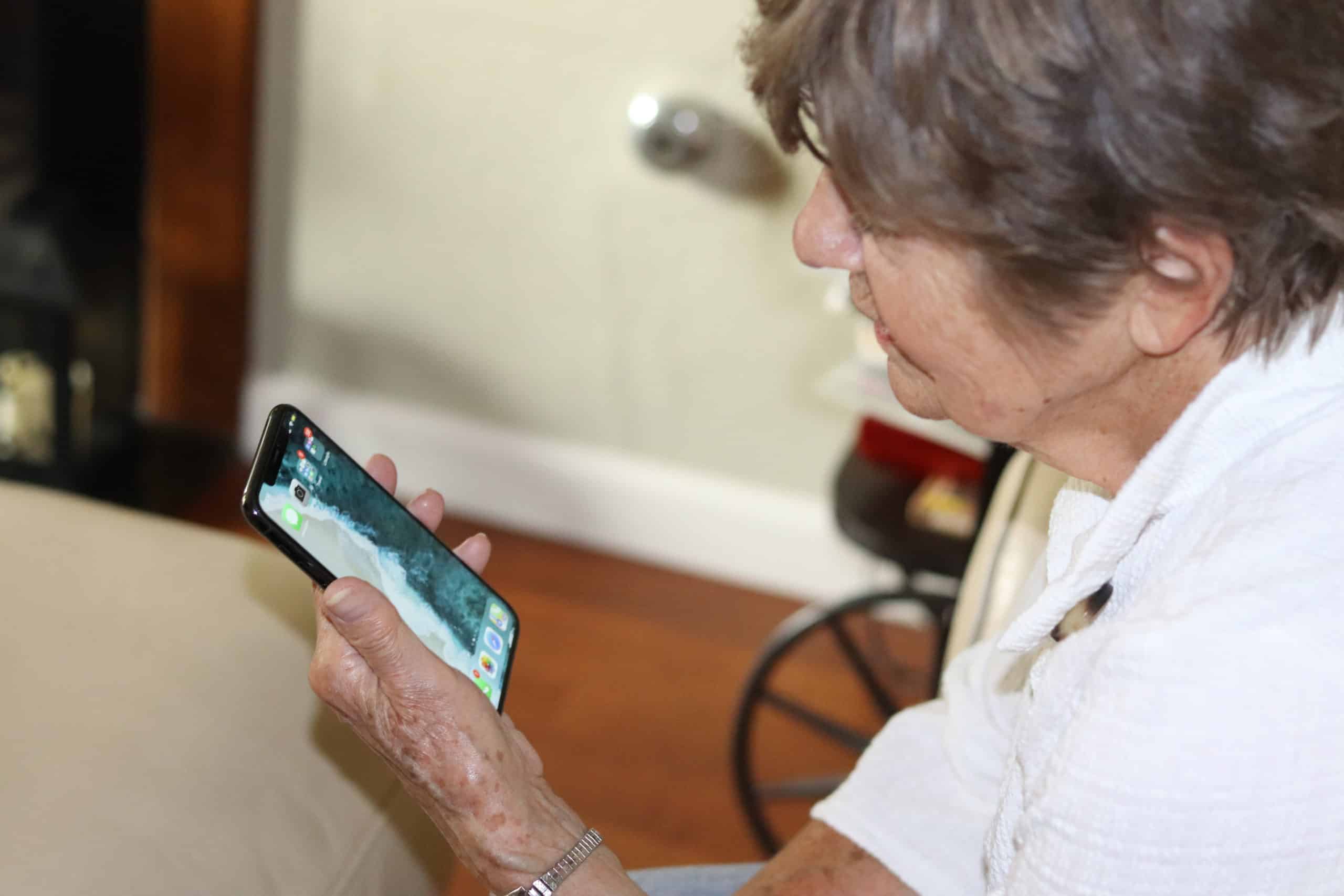
Check out our latest cell phone carrier reviews to learn everything you need to know about the industry’s top providers for older adults.
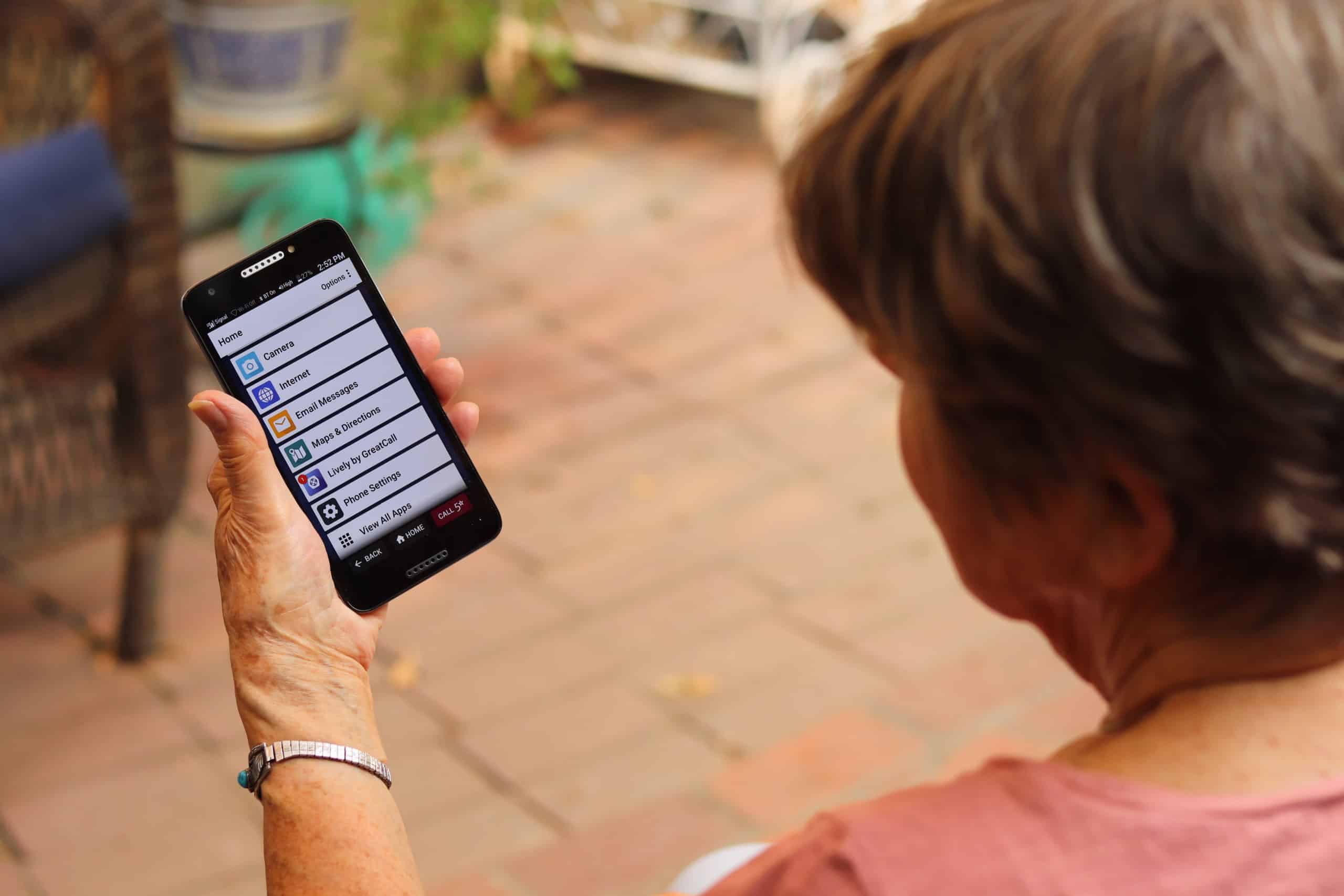
To learn more about cell phone costs and ways to get the best deals, visit our cell phone pricing pages.
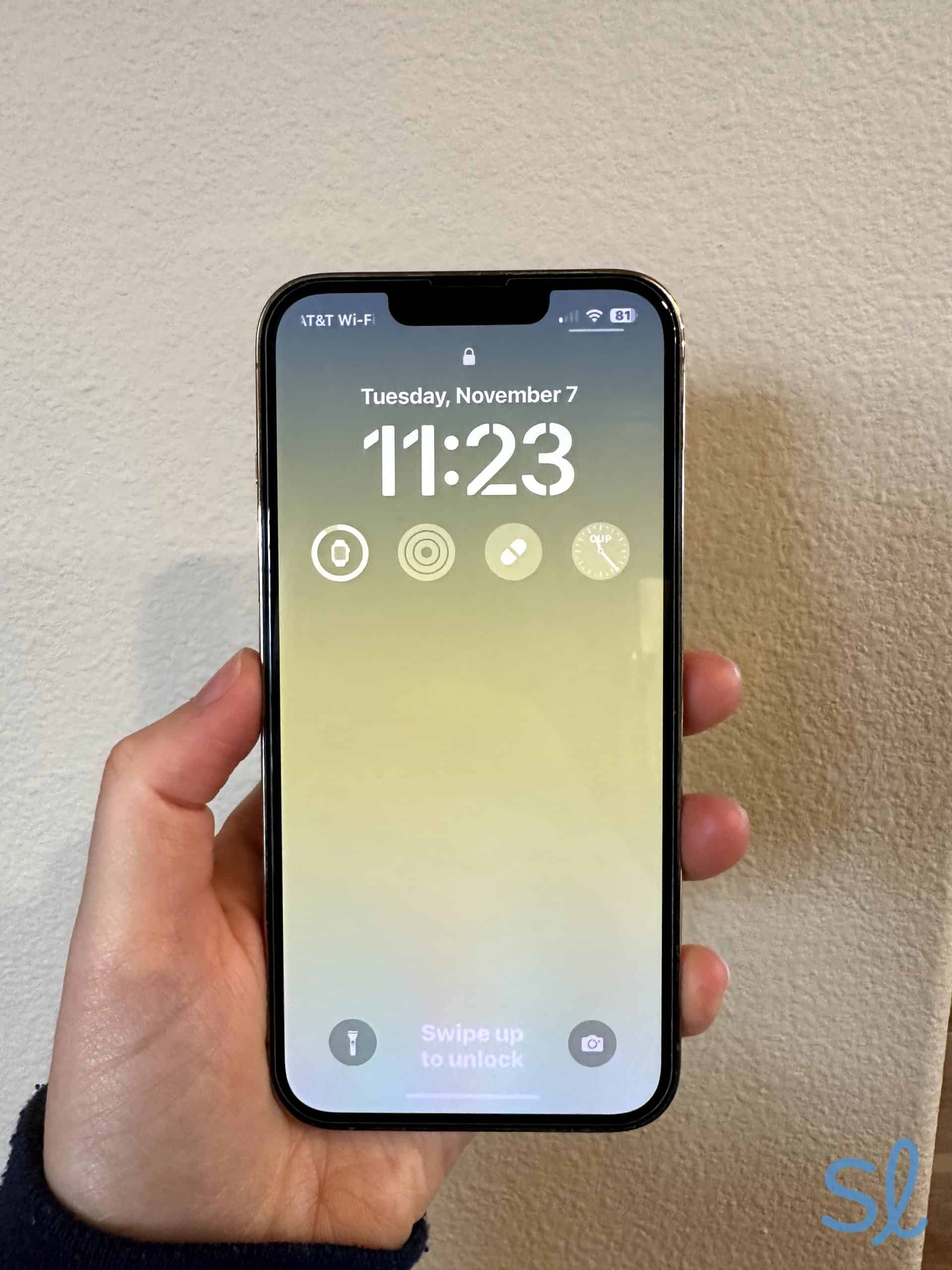
Trying to decide which phone carrier is best for you? We've tested and compared the top cell phone carriers to help you find the plan that's right for your budget and needs.
The rapidly evolving world of cell phone technology keeps most of our world connected. Access to text messages, handheld social media access, phone calls, and video chats open up a world of possibilities and ways to stay connected for older adults.
Older adults aged 65 and older were a little slower to adopt the widespread use of cell phones, but more than 85 percent are now connected with a cell phone.1 A Pew Research study found that 61 percent of seniors have made the jump to smartphones.2
It's clear that many older adults are using cell phones these days, but you may be wondering why seniors need a cell phone. Phones offer a wide range of benefits to older adults, from staying connected to calling for help during an emergency to keeping track of important appointments and refilling prescriptions. Below are just a few of the ways cell phones can benefit older adults.
How cell phones help older adults day to day:
Other benefits of using a cell phone:
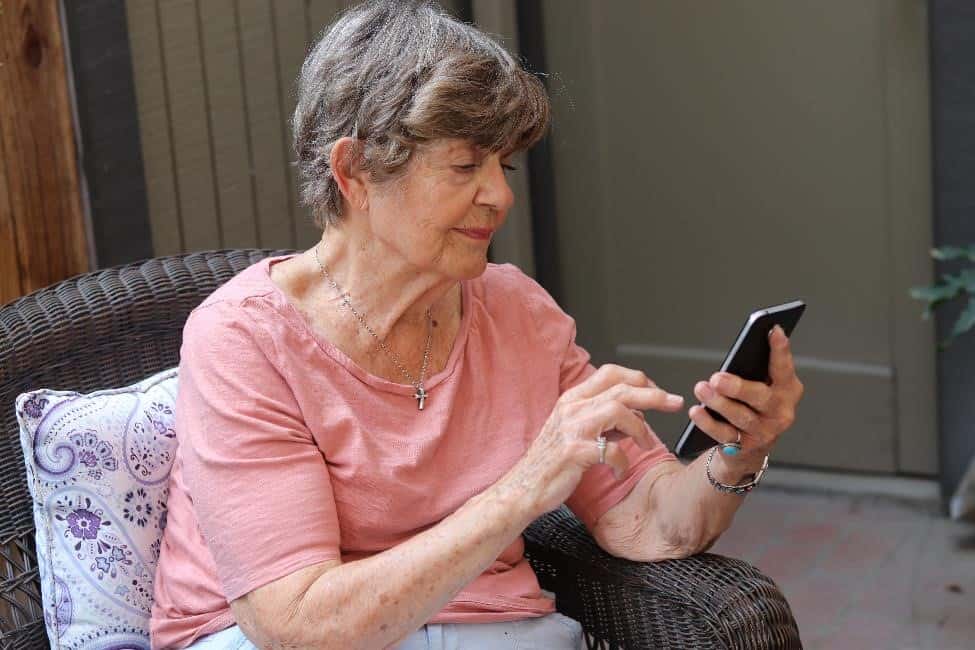
Our editor’s grandma using the senior-friendly Jitterbug Smart4
There is a wide variety of cell phones, plans, and features available to older adults. Just because a cell phone can offer benefits to most older adults does not mean every senior needs all the available features. Here are some important topics to consider before committing to a phone.
Cell phones come in three basic types. A smartphone is essentially a handheld computer that fits in your pocket and can make phone calls. A brick-style phone has limited technology features comparable to a slimmed-down version of a smartphone. And, yes, a traditional flip phone is as close as you can get to a plain old phone in the world of cellular technology. You'll need to decide what level of technology best fits your needs and which design you like best.
You may feel pressured to get a smartphone, such as an iPhone, because everyone else seems to have one, but it's important to consider whether you really need or want one. Between a higher price for the device and month-to-month costs for data plans, smartphones are a more expensive option than traditional flip or basic cell phones. As a senior, the type of phone you need depends on how you plan to use it, along with your budget. If FaceTiming, watching shows on your phone, and looking at pictures on Facebook is important to you, then we recommend a smartphone. If you're on a tight budget or you just want to make calls and send texts to stay connected, then you'll likely be better off with a simple flip phone.
If you choose the smartphone route, then you'll need to decide if you want to go with one of the major smartphone providers: Apple or Android. These terms refer to the operating system that the phone uses. Apple has a cult following with the iPhone, and if you are already accustomed to the company's technology or your family uses Apple, then it may be the best choice for you. However, Android is generally considered more user-friendly. Several Android devices even have an “easy mode” that makes them simpler to use for less tech-savvy individuals.
Some other companies also offer more simple and affordable smartphone options designed specifically for older adults. We'll get into some of our favorites a little later on.
Most cell phone companies offer different versions of pay-as-you-go, month-to-month, and contract-based phone plans. Sometimes the commitment of a contract can earn you additional discounts, but they are less flexible. Other times you can save more money on a pay-as-you-go plan. It just depends on the carrier and the type of promotions they run!
When choosing a phone plan, you'll also want to consider how many minutes of talk, the number of texts, and how much data you plan to use when comparing plans. If you're more of an advanced user or you're getting a smartphone, then you may want an unlimited data plan to enjoy all the phone has to offer. On the other hand, if you just want to be able to make a few calls and send the occasional text, then you'll be better off with a simpler text-and-talk plan.
Did You Know? You can listen to podcasts, read articles, and read (or listen to) books straight from your phone!
From flip phones compatible with hearing aids to smartphones with features specifically designed for older users, those in their golden years have a unique set of needs that phones can address. The available features vary from one phone model to the next, and sometimes even between carriers.
Some helpful features to look for include:
The cost of a cell phone varies widely depending on the provider and how many features the phone has. Flip phones and brick-style phones are reasonably priced, typically ranging from $60 to $100 depending on the carrier. Smartphones are the most expensive of the bunch, starting at a few hundred dollars. They can cost well over $1,000, too, depending on the model and features. With all those options, you can find a phone that fits both your budget and lifestyle.
Many carriers, such as Verizon and AT&T, make expensive phones more affordable by offering monthly payment plans, so you can pay off your phone over time instead of forking out all the money upfront. You can add anywhere from $5 to $25 per month to your bill to cover the cost of the device. If you decide to go this route, then make sure you know exactly what you're signing up for. Some providers simply rent the phone to you for the monthly payment, so you'll have to return the device after a certain period of time.
If you decide a cell phone is right for you, we've outlined a few of our top picks to help you easily compare popular cell phones.
Jitterbug Flip2: For older adults who want to stick to the basics like making phone calls and sending texts, the Jitterbug Flip2 is a simple flip phone priced at $99.99. It features a large-faced keypad, a bright screen, and powerful speakers to accommodate older eyes and ears. The Jitterbug Flip2 also has a Bluetooth interface that is good for Bluetooth hearing aids or headphones. It also has a simplified menu, magnifier tool, and emergency-response button. One feature unique among standard flip phones is the built-in Amazon Alexa assistant. With just the sound of your voice, you can ask Alexa to make calls, write texts, set reminders, and much more. This is great for older adults who struggle with typing on a keypad or reading fonts on a small phone screen.
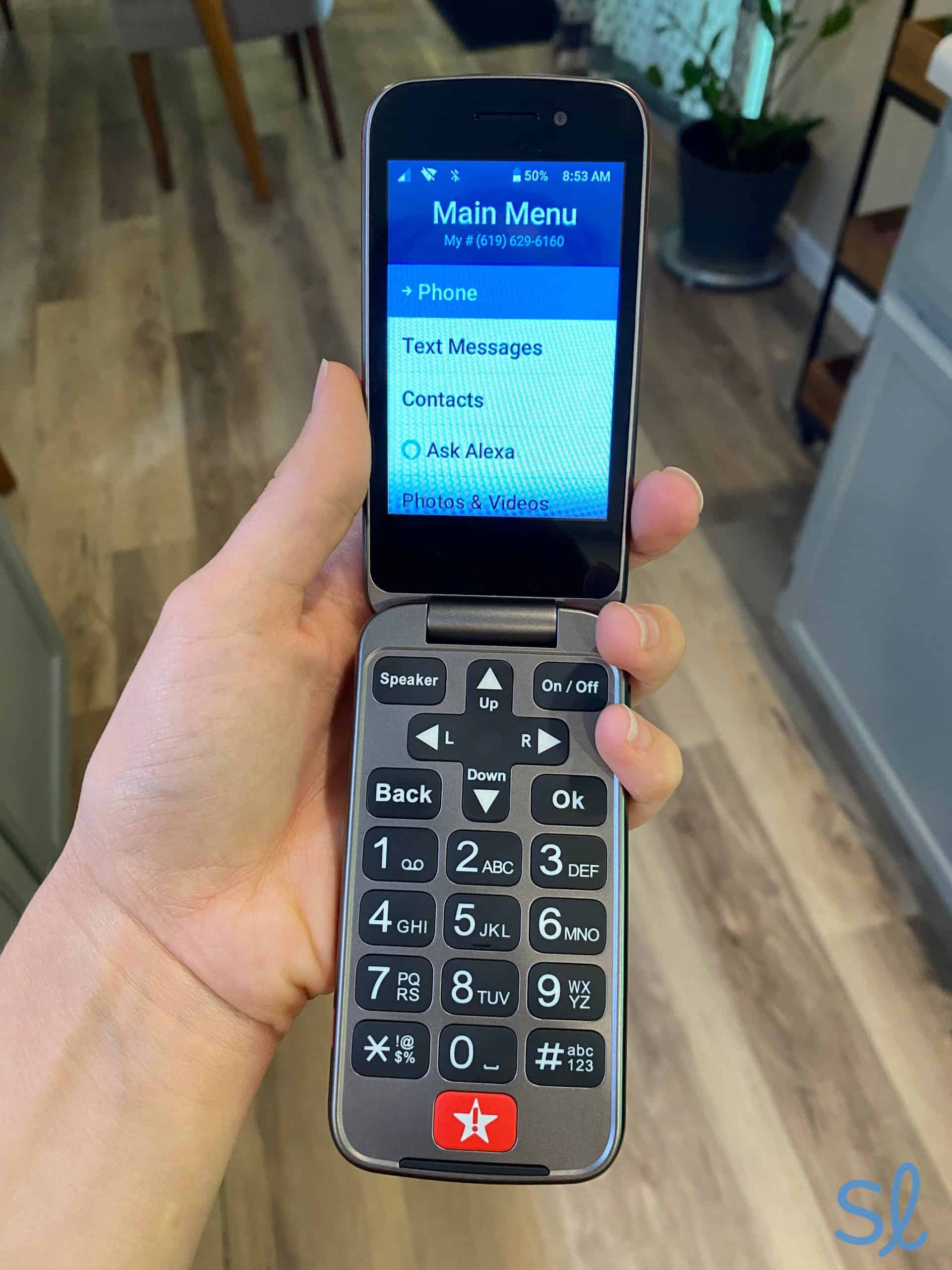
One of our writers testing out the Jitterbug Flip2
Jitterbug Smart4: The Jitterbug Smart4 is a smartphone with a large screen and a simple, list-based menu. It has front-facing speakers, which makes it easier to hear, and it is equipped with an Urgent Response button that will connect you to a live agent for emergencies. The Jitterbug Smart4 is voice-enabled and features mobile internet access, so it's great for those who want to use their phone to check social media or shop online. The Smart4 is one of the more affordable, simple, senior-friendly smartphones on the market, retailing for $149.99, so it's great for those who just want to dip their toe in the water with a smartphone.
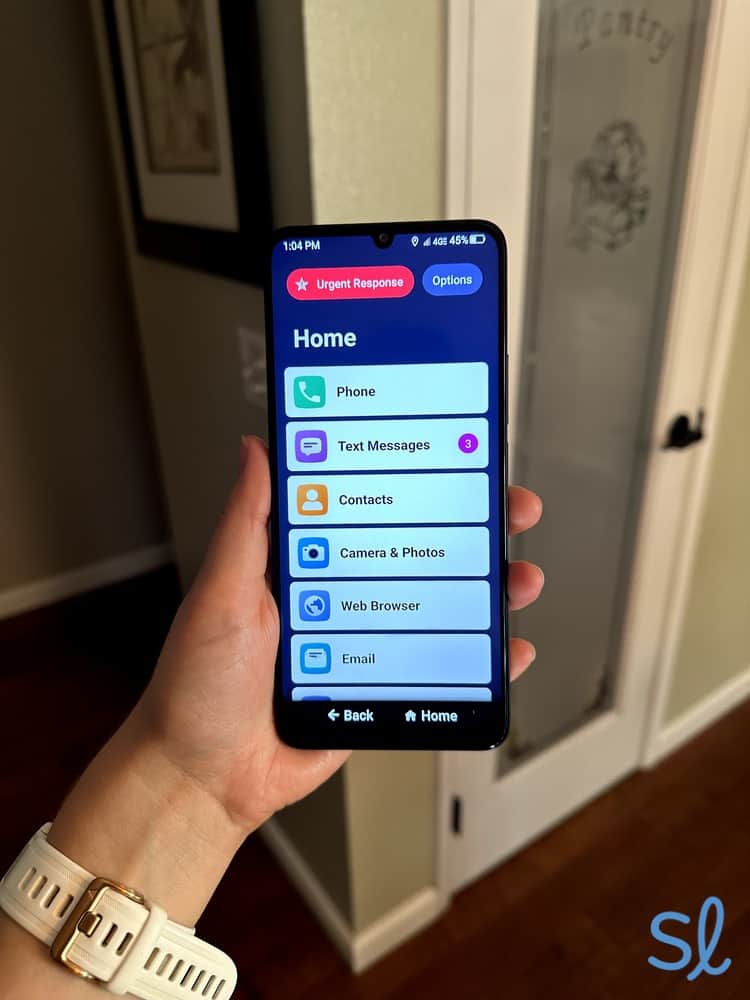
The Jitterbug Smart4 home screen
Snapfon ez4G: Snapfon ez4G is a brick-style phone with a large-text screen display and easy-to-push buttons. It features an SOS button that will easily connect to an operator-based system to assist with emergencies. The phone also offers fall detection, an excellent feature for older adults at high risk of falling. This cell phone is hearing aid compatible and voice command enabled. At just $99.95, it's one of the more affordable cell phone options around. If you're looking for simplified menus, large buttons, and fall-detection capabilities, then this phone is a great investment.
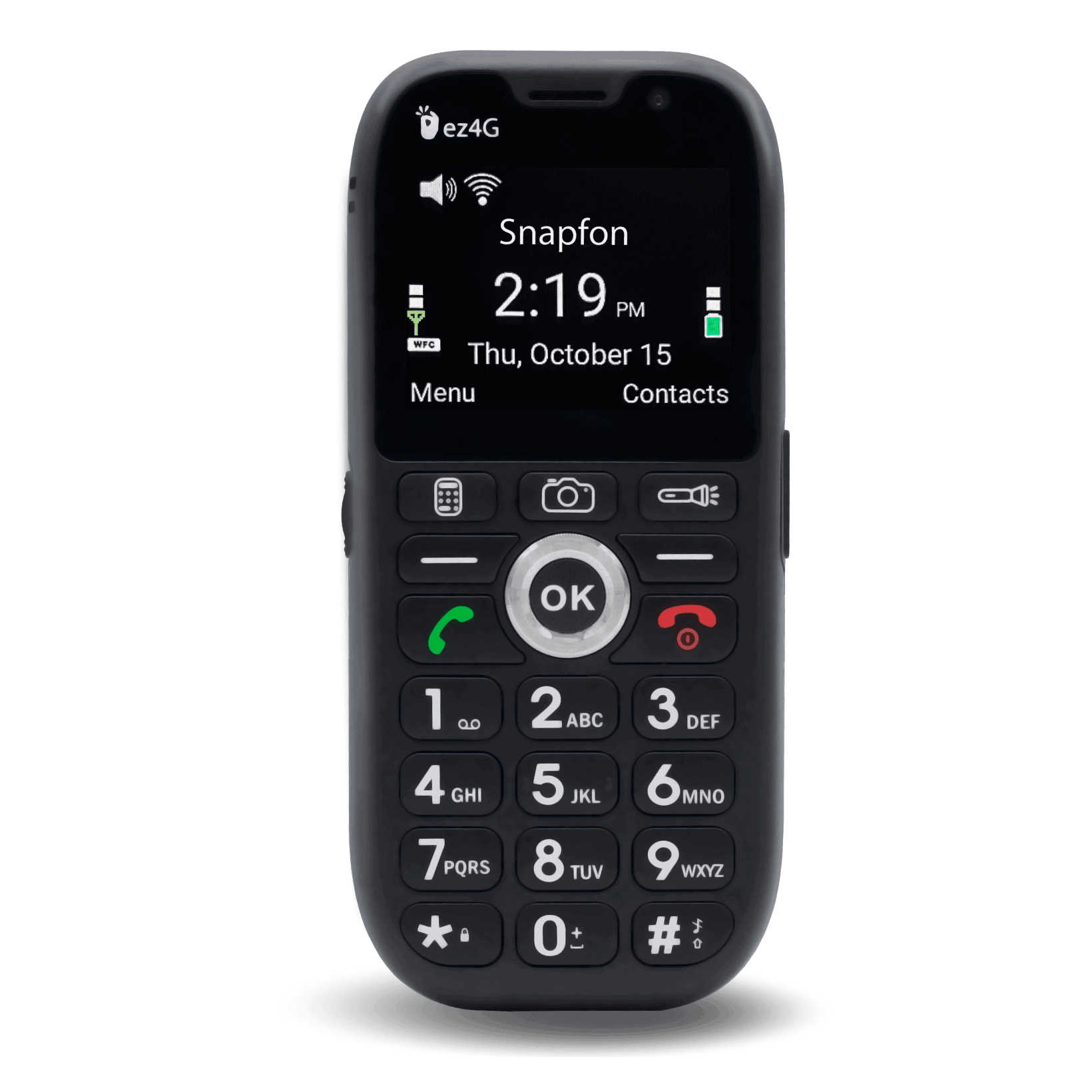
Snapfon ez4G
Consumer Cellular Iris Flip: The Iris Flip is a flip phone with a traditional 12-key keypad. The phone's buttons and backing are rubberized to keep your fingers from slipping on the keys or dropping the phone. It has an extra bright main display, as well as a secondary display. Its powerful speakers are excellent for those with hearing loss. The phone is also Bluetooth-compatible and has an M3/T3 hearing aid compatibility rating. The Iris Flip is another inexpensive option at just $69.
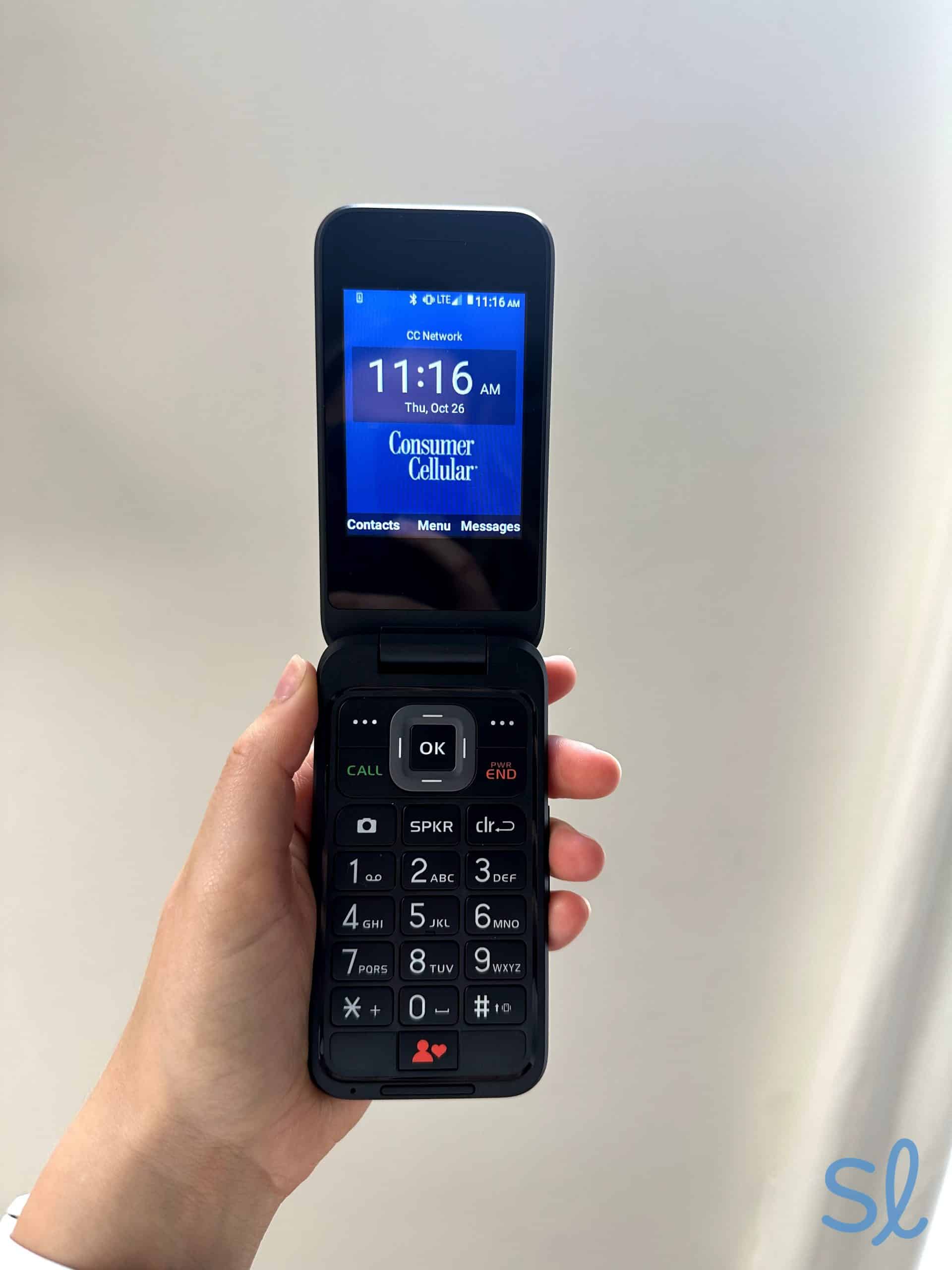
Testing out Consumer Cellular’s Verve Snap
iPhone 8: For older adults looking for a full-featured smartphone, the iPhone 8 offers a large, vibrant LCD (liquid crystal display). If your friends and family are already on iOS devices, then this phone will make video chatting a breeze. Plus, you can download additional apps to help with magnifying and health tracking from the Apple app store. It also has a touch lock button, so the phone can only be unlocked with your unique fingerprint for added security. It won't be as pricey since it isn't the latest iPhone model, but it's recent enough that you'll have most of the latest and greatest features.
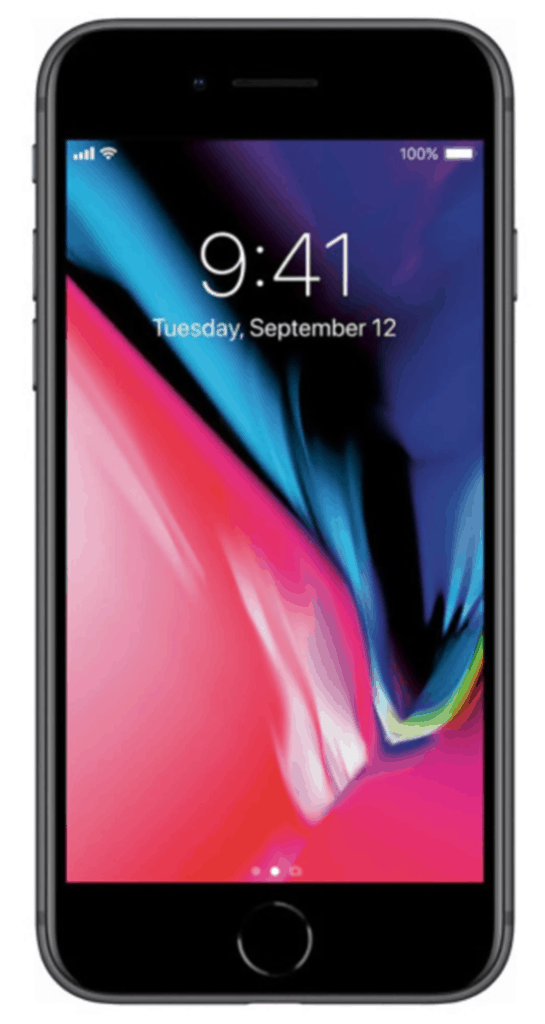
iPhone 8 from T-Mobile
Quick Tip: Check out our list of the best mobile apps for seniors to get the most out of your cell phone. From medication reminders to retirement planning, there are plenty of great apps for older adults!
Now that we've covered some of our top cell phone picks for seniors, let's take a look at our favorite cell phone carriers that offer deals for seniors on talk, text, and data plans.
BroadbandNow. (2022). Smartphone Usage Facts.
Pew Research Center. (2022). Share of those 65 and older who are tech users has grown in the past decade.